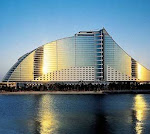With your eyes pointed skywards, an unusual journey to some of the most evocative sacred locations in the city.
As we all know, Rome is a city that evokes strong emotions. Like those we feel when standing in front of the Coliseum, with its long history, or visiting the Vatican Museums, those mines of priceless treasures, or the Capitol, an architectural gem designed by the great Michelangelo: a journey along a sacred and privileged route within the Eternal City.
Having visited the Lateran zone and the Basilica of St. John Lateran, the oldest of the Roman churches, with masterpieces such as the Sacred Altar which reputedly has pieces of the table used by Christ at the Last Supper, the next stop is the “Sancta Sanctorum” papal chapel. Opened to Costa guests for the first time, an exclusive for the Italian cruise market, entry to the chapel will give you the chance to glimpse the holiest place in Christendom. Here you’ll stop to admire the precious relics including an iron of Christ begun by St. Luke and, according to legend, finished by an angel called "Archeiropoeton" – Greek for “not made by human hands”. Close by is the "Scala Santa", a 28-step staircase that, according to the Catholic tradition, was walked by Christ when he was summoned by Pontius Pilate during his trial. Other sacred spots not to be missed are the famous Vatican Museums, of which there are 13 in all, developed as a result of the patronage and the passion for art of the various Popes. According to TripAdvisor, the online travel community, they are second only to the Louvre in terms of the most loved museums by tourists. Part of the museums, but also one of Rome’s biggest artistic attractions in its own right, is the Sistine Chapel, with its frescoes by Perugino, Botticelli and Michelangelo who, as well as frescoing the vault, also painted The Last Judgment. The final destination is St. Peter’s Square which, marked off by the Bernini Colonnade, hosts the largest Basilica in Christendom, a home to works of inestimable value such as Michelangelo’s Pietà and the Baldacchino by Bernini.
From shrine to shrine in search of the Madonnelle
Yet the Eternal City also surprises for its unexpected panoramas, sudden splendours and hidden masterpieces, a prime example being the small holy sanctuaries. Little gems of urban furniture that the Romans call ‘Madonnelle’ – ‘little Madonnas’. In the historic city centre, on centuries-old buildings and on street corners, there are over 500 sacred images on canvases and panels, in marble, stucco, metal, terra cotta and wood. The authors? Some great masters, but also many other unknown and talented artists.
An unusual journey, from Via dei Coronari to Campo de’ Fiori
Walking though the old neighbourhoods of Ponte, Parione and Regola, opposite St. Peter’s on the banks of the Tiber is the most important ‘Madonnella’ in Rome. On the corner of Via dei Coronari, known for its antique shops, and Via Domizio is the Immagine di Ponte, painted by Antonio da Sangallo the Younger in 1523. A short distance away, between Piazza dell’Orologio and Via del Governo Vecchio, is the magnificent 17th century mosaic Madonna with Child attributed to Borromini.
On the corner of Corso Rinascimento and Via Canestrari, is the visually striking the Immaculate Conception. Just round the corner, in Via dei Banchi Vecchi, is a 19th century Baby Jesus with con St. Anthony and, practically behind Campo de’ Fiori, a Cristo del Monte di Pietà by great architect Carlo Maderno.
They have been defined as “artistic crafts”, “urban décor”, and “minor works”. In any case, they are popular antique treasures, dating from the Renaissance up until to present day, that form an integral part of the urban landscape and belong to everyone. All you need do is lift your eyes skywards.














No comments:
Post a Comment